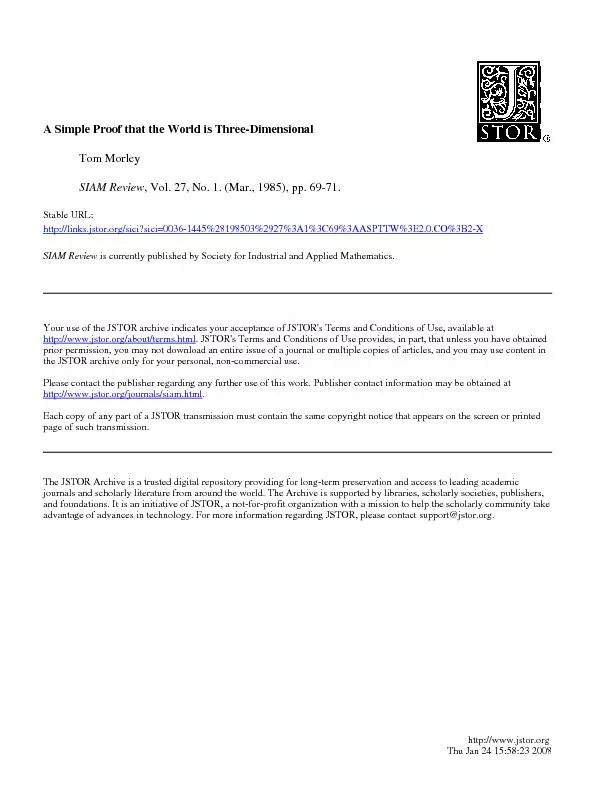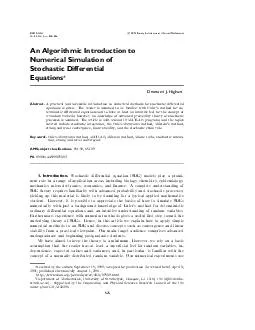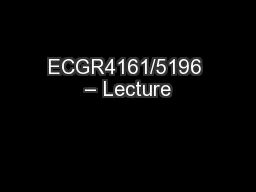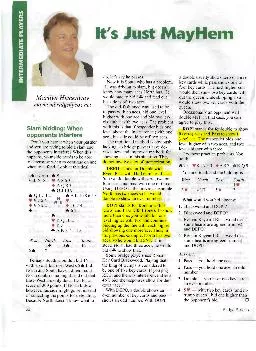PDF-SlAM REVIEW 0 1985 Society for Industrial and Applied Mathematics Vol.
Author : alida-meadow | Published Date : 2016-08-13
003 CLASSROOM NOTES IN APPLIED MATHEMATICS EDITEDBY MURRAY S KLAMKIN This section contains brief notes A SIMPLE PROOF THAT THE WORLD IS THREEDIMENSIONAL TOM MORLEY
Presentation Embed Code
Download Presentation
Download Presentation The PPT/PDF document "SlAM REVIEW 0 1985 Society for Industria..." is the property of its rightful owner. Permission is granted to download and print the materials on this website for personal, non-commercial use only, and to display it on your personal computer provided you do not modify the materials and that you retain all copyright notices contained in the materials. By downloading content from our website, you accept the terms of this agreement.
SlAM REVIEW 0 1985 Society for Industrial and Applied Mathematics Vol.: Transcript
Download Rules Of Document
"SlAM REVIEW 0 1985 Society for Industrial and Applied Mathematics Vol."The content belongs to its owner. You may download and print it for personal use, without modification, and keep all copyright notices. By downloading, you agree to these terms.
Related Documents














